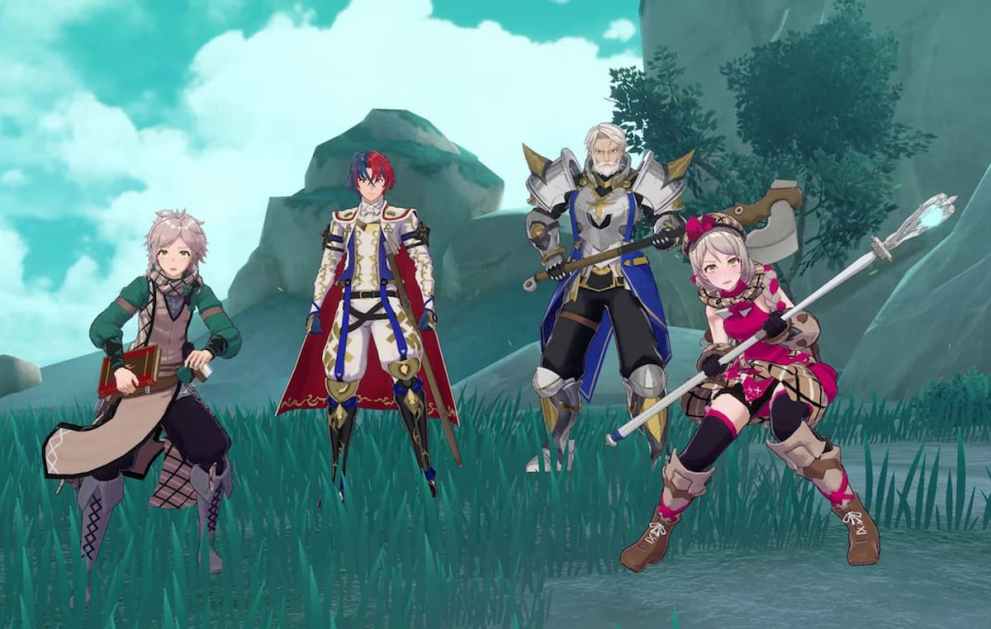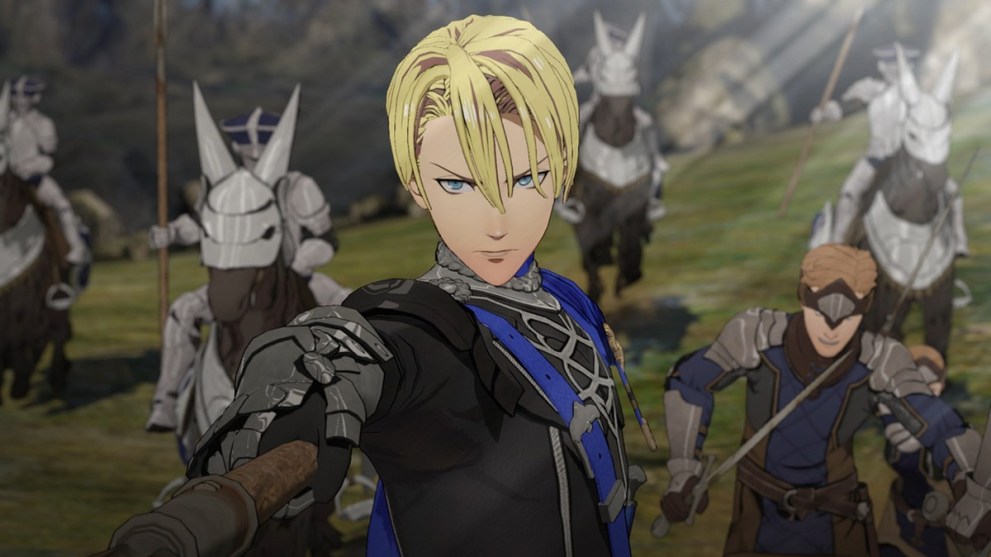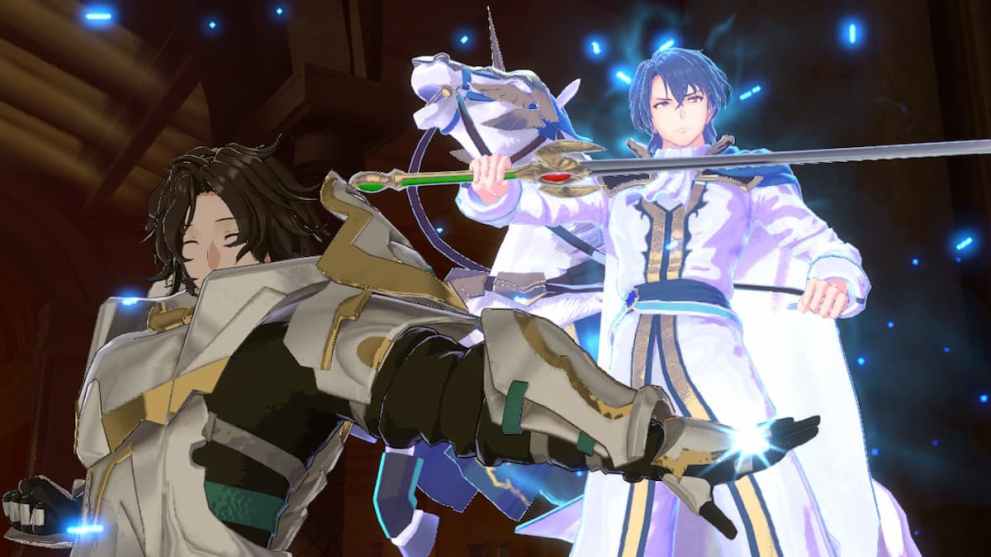Now that Fire Emblem Engage has been out for a few weeks, we’ve got a pretty clear impression of what it is, and more broadly, what it isn’t.
The fourteenth mainline entry in Intelligent Systems’ long-running tactical warfare/dating sim, Engage’s public response has been decidedly underwhelming. As of the time of writing, it holds an average critical score of 81 on Metacritic, and is suffering a bludgeoning with a rapidly diminishing user score of 6.6.
Excluding spinoffs, this places Engage as tied for the second lowest Metascore on the platform, matching the remakes Shadow Dragon and Shadows of Valentia, and surpassing only the Wii’s Radiant Dawn (78).
To be clear, 81 is not a bad score by any means. By most measurements, it’s a very good result and indicative of a solid game that comes as recommended — the issue is that the standard set by this franchise demands just a little bit more than that.

I refer to my colleague Zhiqing’s excellent review, in which Engage received a score of 3.5, considered ‘fair’ by Twinfinite’s metrics and equivalent to a 70 out of 100. Her stances on the game echo my own for the most part, so I’ll allow her to summate its strengths and flaws with a few select quotes.
“In my early preview of the game, I’d mentioned that the story felt very by-the-book, with familiar beats greeting you at every step of the way. By the time I beat Engage, my feelings remained largely the same: this game is a decent enough romp through a medieval fantasy story with fun tactical combat, but rarely any surprises or truly compelling character arcs to keep you properly invested.”
Zhiqing Wan, Twinfinite
“As usual, the gameplay is what saves Fire Emblem Engage here. The tactical combat that Fire Emblem fans know and love makes a return, with one new twist: Engage. As you progress through the story, you’ll gain access to Emblem Rings, which allow your characters to Engage with Emblem characters to power them up and make use of some truly ridiculously powerful abilities.”
Zhiqing Wan, Twinfinite
“At the end of the day, Fire Emblem Engage ends up being a rather middling experience that wasn’t afraid to try a few new things as far as combat is concerned, but couldn’t come close to the heights that its predecessors have set for the series. I don’t necessarily see myself revisiting Engage anytime soon, but if you just want an excuse to see your favorite icons from the series again, or if you’re craving more tactical RPG goodness, you could do a lot worse.”
Zhiqing Wan
The hack journalism I’m displaying by letting someone else do the legwork notwithstanding, these three paragraphs embody not only my feelings on Engage, but much of the general consensus from critics and fans alike.
Those abovementioned user reviews on Metacritic, which are usually best taken with a grain of salt, actually provide a lot of measured, reasonable explanations for their apathy. Among the ones rated the most helpful, they express that, “the game is worth playing for the battles alone, but don’t expect much in terms of a compelling story or engaging character,” (dmztheone, 7 out of 10) and that it has, “innovative and interesting gameplay with dazzling character designs, but the insipid plot and bland characterization of the cast leave a lot to be desired,” (failnaught, 4 out of 10).
As much as I’d like to challenge these notions as a longstanding Fire Emblem apologist, I honestly cannot. My brutal viewpoint is that Alear is a pleasant nobody with an obtuse hairstyle. I once opined that Byleth was Fire Emblem’s dullest protagonist, and despite having more dialogue, the Divine Dragon is unable to scrape together even the vaguest semblance of depth.

It doesn’t help that Alear is once again, an amnesiac, and once again, roundly adored by all who come into contact with them, friend and foe alike. We’ve seen these plot beats repeatedly run into the ground by preceding avatar characters, and by now, its application is borderline offensive.
Making matters worse, the surrounding units have some of the weakest personalities in the series’ history. Rosado is a welcome exception, Alcryst gets a pass, and I could come around to Louis or Hortensia, but by and large? A lot of pretty faces plastered atop tepid tropes, who seem to constantly be making an effort to be as polite and reverent as possible when interacting with their beloved demigod. If you dropped, say, a Gregor or L’arachel in here, the others would be set aghast by their candor.
In short, Fire Emblem Awakening may be the game with no feet, but Fire Emblem Engage is the story with no legs. That much is universally agreed upon, but where I differ from the norm is that beyond this, I am finding it vastly superior to Fire Emblem Three Houses.
To claim this is paramount to sin, as Three Houses has rightfully garnered what could be considered a vociferous following. It may not have reached the review score heights of Awakening on the 3DS, but thanks to the Switch’s considerably greater reach (122.5 million units sold and still going strong, compared to 75.94 million for the little handheld that could), it was able to lure more new fans in than its predecessor.
At over 3.82 million units sold, Three Houses is not only the bestselling Fire Emblem game, but has quickly become the de facto measuring stick, bolstered by the most compelling diegesis in the franchise. Its triad of deuteragonists: Edelgard, Claude, and our lord and savior Prince Dimitri, each stake their claim as the finest crafting of emotional storytelling we’ve yet seen.

Pit Three Houses’ gameplay mechanics against Engage, however, and the scales are tipped towards Pepsi-kun and their merry band of sycophants. The reintroduction of the weapon triangle, divisive though it remains, has been made more significant than ever thanks to the addition of a break mechanic. No longer can your tankiest unit rip through every foe in their path, lest they be disarmed by an unfavorable matchup. Only armored units, some of the series’ most consistently flawed soldiers, are immune to this status, boosting their value.
Weapon matchups not only didn’t matter in Three Houses, but the weapons themselves became laughably ubiquitous. Want an archer? Simply equip a bow on someone, anyone, regardless of their class. It didn’t matter if they were a swordsman, a mage, or a small child, they were more than happy to snipe away as if they were visiting a Renaissance faire. Yes, there were some exceptions — magic-casting being the most obvious — and particular folks were better suited to some weapons than others based on stat growth, but overall, unit classes felt redundant.
Battalions masked an otherwise uninspiring concept with equally uninspired drones at your disposal, and Adjutants were so forgettable, even they often chose not to participate in pressure situations. Thanks for showing up, Hanneman, now say “Crest” some more. That never gets old.
Nothing introduced by Three Houses compares to the variety and utility of the Emblem Rings, and how you can customize your units based on which legend of yesteryear they gain rapport with. Again, you can teach new weapon affinities to a unit based on their bond, but it’s a more engrossing process than having them sit a Certification Exam and hoping the chances of passing were high enough. I highly doubt Raphael could nail a written exam, his only talent is his buff physique (and his wonderful hands).

Even the unit types themselves are more fleshed out. Some pegasus knights carry axes instead of lances, some fighters elect to wield a blade, and all will have to earn the aforementioned right to expand this repertoire. Qi Adepts aren’t just one-note healers; they can mitigate damage through Chain Guard, or disarm certain weapon types with their fists. Other units have the Backup distinction, chipping in with an additional attack. It isn’t a slap-dash “everyone can do everything”, it’s “we’ve logically increased the amount of things they are capable of to make them potentially useful”.
This all makes roster building and map positioning feel important again, something I desperately missed in Three Houses. Scandalous as it may be, strip the latter of its storyline and I’m at something of a loss to describe what even is important within it… and, yes, that’s a statement that’s bound to go down well in the court of public opinion.
Why the frosty reception, then? There is always a likelihood that Engage is being review bombed, but when it comes down to it, I am of the belief that a lacking narrative is a bigger hurdle to clear than we perhaps realize. Fire Emblem Fates is another thorny subject amongst the fandom for being an overly decadent variant of Awakening, but when it comes down to it, Conquest in particular had some of the most fascinating map designs and dramatic win conditions. Remember having to survive enough turns of enemy onslaught in Port Dia? How about fleeing the Faceless on the Eternal Stairway?
For all of their flaws, the Fates games did a lot right. What they didn’t quite stick the landing on was — you guessed it — storyline, placing them in the lower echelon of Fire Emblem appreciation. Where the Hoshido vs Nohr dynamic could have created levels of morally gray mission conduct, it instead boiled down to, A: play for the good guys, B: play for the bad guys but feel guilty about it, or C: head-fake both parties to eventually end up with the most friends. Cry me a river, Corrin, you couldn’t wave a Yato at even the most mundane Blue Lions member (aka Ingrid).

Engage’s storyline isn’t the worst we’ve ever seen. It surpasses various earlier iterations in the series based on their hardware limitations alone. It is, however, a nothing tale populated by nothing heroes. I don’t know how you could botch characters voiced by anime royalty like Saori Hayami (Spy x Family, Demon Slayer), Junichi Suwabe (Kuroko no Basuke, Jujutsu Kaisen), and the iconic Kotono Mitsuishi (Sailor Moon, Neon Genesis Evangelion), and yet, here we are. Their performances do at least alleviate the sting a bit; it really is a star-studded cast.
Once you’ve skipped the cutscenes and glossed over those blasted support conversations, you’re in for a treat. Engage’s paper thin plot will likely prove even more damning as the years go by, but I stand resolute when I say that it really deserves a much better reputation than the one it is getting. It’s just a shame that it is being written off by the Fire Emblem community so quickly.
If only its story was a little more (wait for it)… engaging. Boom! Opinion piece ruined, totally worth it.
